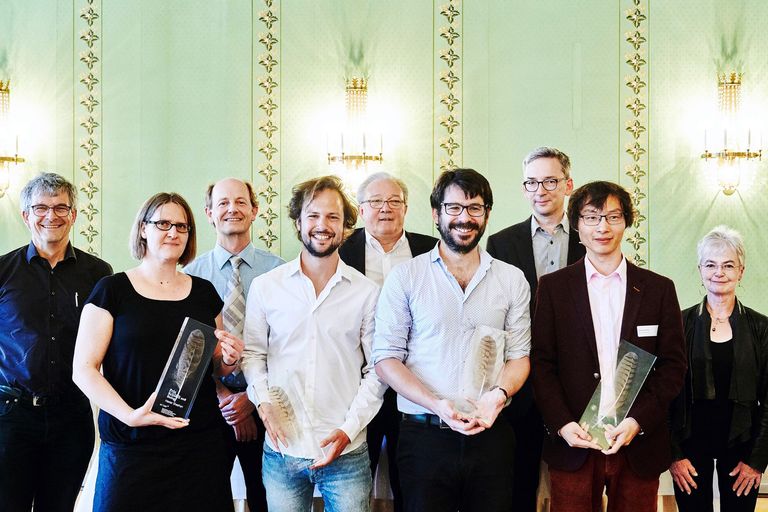Temi associati

SCNAT honours the four best dissertations in sciences
The storage of radioactive waste, the pollination of plants, the use of solar energy, and the mathematical parsing of knots and surfaces – the Swiss Academy of Sciences (SCNAT) will honour the four most important discoveries and solutions by young researchers at Swiss universities with the Prix Schläfli 2018 in Bern on 25 May. Alexandre Bagnoud (Geosciences), Livio Liechti (Mathematics), Hester Sheehan (Biology) and Xiaojiang Xie (Chemistry) win the prize for discoveries made while working on their dissertations. The Prix Schläfli has been awarded since 1866.
Immagine: Manu Friederich
Prix Schläfli 2018 in Biology: Hester Sheehan
Those who frequent nightclubs know that when they wear white, their clothes take on a special glow in UV light. But researchers took a long time to realise that plants have a very similar "nightlife": the ways in which the colours of flowers determine which pollinating insects and birds they will attract have long been an important field of research, but the researchers – who mostly worked during normal working hours – only focused on the situation during daylight, on bright and vibrant flowers and eyes that specialise in seeing colour. In her research work, Hester Sheehan also looked at the way this phenomenon works during the night: boring white petunias that appear midnight black in the UV spectrum. An eye-catcher for nectar-hunting moths that are active during the night.

Prix Schläfli 2018 in Geosciences: Alexandre Bagnoud
Not far from St. Ursanne, the idyllic medieval village on the Doubs, there is another, quite different visitor attraction: swisstopo's Mont Terri rock laboratory. The microbiologist Alexandre Bagnoud often visited this laboratory between 2012 and 2016, not as a layman curious about optimum conditions for storing radioactive waste, but as an active researcher.
Immagine: Alexandre Bagnoud
Prix Schläfli 2018 in Mathematics: Livio Liechti
We could start with flamenco. Or with doughnuts. But neither of these would really help us to understand Livio Liechti's research. "On the spectra of mapping classes and the 4-genera of positive knots" is the title of the thesis which he submitted a year ago – and anybody who can visualise this has to be a member of a select circle of specialists. Whereby "visualise" is a fairly apt term. "I like the fact that the objects of my field of research are quite visual," says Liechti. He thinks of them three-dimensionally – and his mathematical thought processes also often work on this visual level, and not only in formulas, figures and logical sentences.
Immagine: Livio Liechti